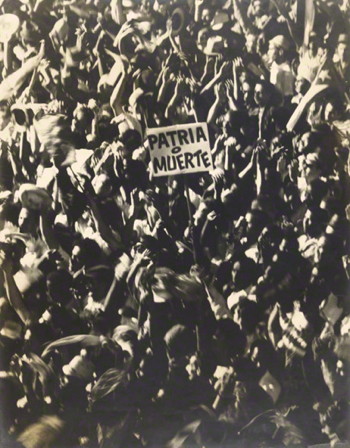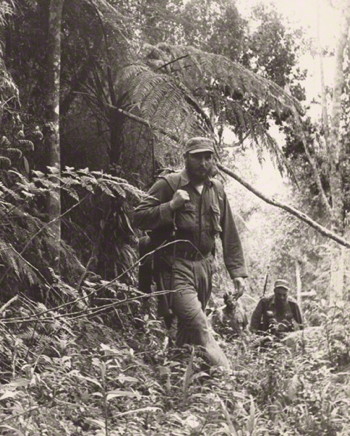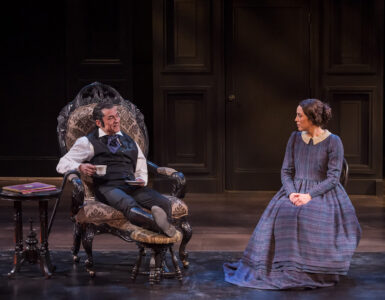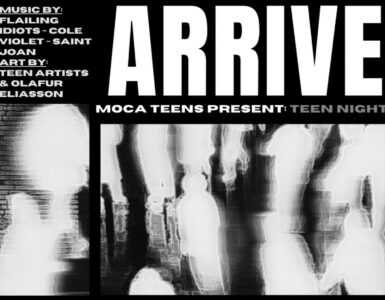
***
Now on exhibit at the Getty Center is and an engrossing exhibition of photographs of Cuba before, during, and after the Revolution. This extraordinarily comprehensive exhibition marks the first showing of Getty”™s Cuban photographs by Walker Evans. Also on view is Cuban Revolutionary photographs and contemporary work by Virginia Beahan, Alex Harris and Alexey Titarenko.
Review by Pauline Adamek
On display at the J. Paul Getty Museum, the Getty Center until October 2, 2011, A Revolutionary Project: Cuba from Walker Evans to Now looks at three critical periods in the nation”™s history as witnessed by photographers before, during, and after the country”™s 1959 Revolution. The exhibition juxtaposes Walker Evans”™ 1933 images from the end of the Machado dictatorship with views by contemporary foreign photographers Virginia Beahan, Alex Harris and Alexey Titarenko, who have explored Cuba since the withdrawal of Soviet support in the 1990s.
A third section bridging these two eras presents pictures by Cuban photographers who participated in the 1959 Revolution, including Alberto Korda, Perfecto Romero and Osvaldo Salas.
Cuba”™s attempt to forge an independent state has been a project under development for more than 100 years and a source of fascination for nations, intellectuals, and artists alike.
The theme of the exhibition is the “idea of Cuba.” Spanning two-thirds of the twentieth century, from 1933 – 2006, these thirteen photographic artists have each tried, in their own way, to interpret what Cuba “is.” Â
Naturally, this has not been an easy task.
First section.
Walker Evans was only 29 or 30 years old when he first went to Cuba in 1933. At the time, the small island country”™s capital of Havana held the old world flavor and appeal of an antique European city, particularly with its elegant architecture. Evans was heavily influenced by Eugène Atget (1857-1927), a French photographer who spent nearly thirty years photographing details of often-inconspicuous buildings, side streets, cul-de-sacs, and public sculptures in his beloved Paris. The body of work left by Atget greatly informs the work of Evans in Cuba.

Second section.
The second part of the exhibition covers the work of nine Cuban photojournalists who participated in recording the political context and triumphs of the emerging state in the years surrounding 1959.
Fidel Castro realized the importance of establishing a visual iconography for his movement. Toward that end, he occasionally revisited the important sites of the Revolution, allowing for photo opportunities like the one shown here. [above ^ ] The island”™s mountain terrain, stronghold of Castro”™s rebel forces, and the lifestyle it demanded became key visual symbols of the new government. Castro”™s beard, originally grown as a result of his time in the mountains, became part of his public identity.
In 1959 until 1965 a newspaper called Revolucion was started by the leaders of the Revolution and gave these photographers an outlet for their work. At the time, Life magazine and its various International photographers had set the standard for photojournalism. With the launch of this newspaper, Cuban photography now had financial backing to create its own body of work as well as document events of the Revolution and establish iconic imagery of the era.

Included in the exhibition is the actual photo that is considered the most iconic image of the revolutionary hero Che Guevara taken by Alberto Korda titled Guerrillero Heroico (March 5, 1960). One of the world”™s most reproduced images, it has been adopted for political causes, appearing on countless numbers of t-shirts, banners, and street art around the globe. The print on view in the exhibition is among the earliest versions of the photograph known to exist. Made as a press print, it was used as a source to reproduce the image in media outlets a year after Korda photographed Guevara at a rally in Havana.
Also on display in the exhibition is the well-known revolutionary photograph Patria o Muerte, Cuba (Negative, January 1959; print, 1984) by Osvaldo Salas, one of Cuba”™s most important photographers. Salas effectively captures and conveys the populist fervor in Cuba shortly after the movement”™s triumph with a slightly blurry yet animated image of a patriotic sign framed by a bustling celebratory crowd. [See top image ^ ]
Third section.
The last part of the exhibition covers 1991 onwards. Soviet troops began to withdraw from Cuba in September of 1991. The collapse of the Soviet Union later that year would have dramatic effects on the nation. The island soon found itself isolated and adrift, without political or military anchors and devoid of subsidies. Fidel Castro declared a “Special Period” (perÃodo especial), marked by food rationing, energy conservation, and a decline of public services.
In the nearly 20 years since the Soviet withdrawal, Cubans have managed to survive through perseverance, the forging of new political relationships, and the easing of Socialist systems. This period of transition, which continues today with the recent transfer of power from Fidel Castro to his brother Raúl, has attracted the attention of photographers from around the world. This section of the exhibition looks at the work of three photographers with diverse approaches: Virginia Beahan, Alex Harris and Alexey Titarenko.
This collection of arresting images features many dramatic scenes, capturing the fervor of the era, as well as the day-to-day life in Cuba, depicting the country”™s decaying old-world charm and descent into poverty.
***
A Revolutionary Project: Cuba from Walker Evans to Now is on view at the J. Paul Getty Museum at the Getty Center, Los Angeles through October 2, 2011.
***
The J. Paul Getty Trust is an international cultural and philanthropic institution devoted to the visual arts that includes the J. Paul Getty Museum, the Getty Research Institute, the Getty Conservation Institute, and the Getty Foundation. The J. Paul Getty Trust and Getty programs serve a varied audience from two locations: the Getty Center in Los Angeles and the Getty Villa in Malibu.
Visiting the Getty Center
The Getty Center is open Tuesday through Friday and Sunday from 10 a.m. to 6 p.m., and Saturday from 10 a.m. to 9 p.m. It is closed Monday and major holidays. Admission to the Getty Center is always free. Parking is $15. No reservation is required for parking or general admission. Reservations are required for event seating and groups of 15 or more. Please call (310) 440-7300 (English or Spanish) for reservations and information. The TTY line for callers who are deaf or hearing impaired is (310) 440-7305.
Additional information is available here. Sign up for e-Getty here to receive free monthly highlights of events at the Getty Center and the Getty Villa via e-mail, or visit the official site for a complete calendar of public program.








May Day is a National Communist Holiday and millions showed up in Havana to listen to Fidel Castro mirroring the illegal alien protest marchers in the United States of America, as Castro condemned the American Government. While the United States Congress and the United States Senate cave into the demands of the protesters and boycott participants. Fidel Castro the Communist Dictator of Cuba who promised government reform for the peasants, instead took over the country for himself after over throwing the government. He says he sees the start of the same movement in the United States and is so very proud of all the protestors in the United States of America on this historic May Day Communist Holiday.`